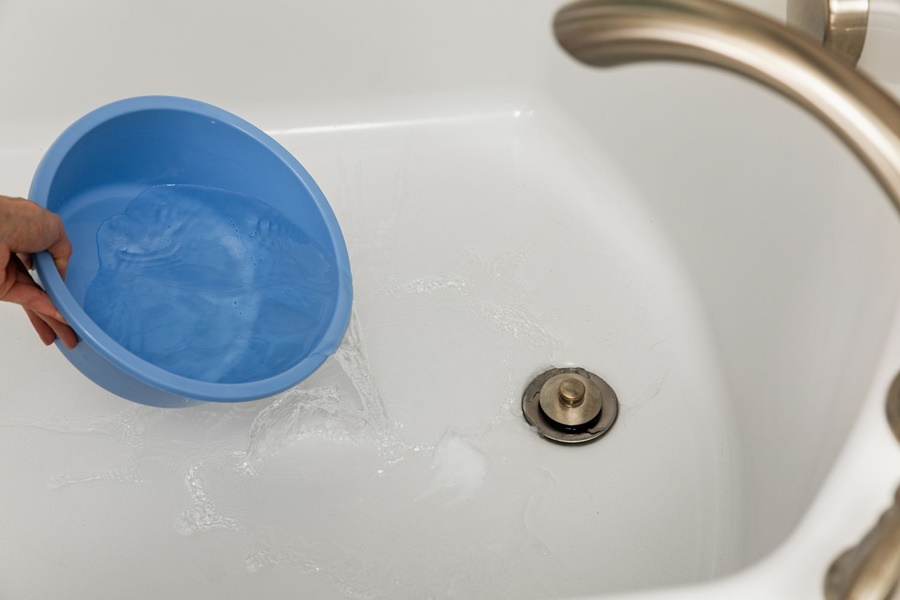Over time, bathtubs can accumulate stubborn stains from hard water, rust, soap scum, and mold. Especially in older tubs, these stains can make the bathroom look dirty no matter how often you clean it. Fortunately, with the right techniques and products, you can restore your bathtub to a much cleaner and brighter condition.
This guide will walk you through the entire process of cleaning an old stained bathtub, including what tools and cleaners to use depending on the material of your tub and the type of stains you're dealing with.
1. Identify Your Bathtub Material
Before you start scrubbing, it’s crucial to know what your tub is made of. The cleaning methods and products you use should be safe for the specific surface to avoid damage.
Porcelain (Cast Iron or Steel Enamel): Very durable, but can chip if scrubbed too hard.
Acrylic: Lightweight and common, but more prone to scratching.
Fiberglass: Less durable than acrylic and more sensitive to harsh chemicals.
2. Gather Your Cleaning Supplies
Here’s a list of basic cleaning items you’ll need:
Basic Supplies
Baking soda
White vinegar
Dish soap (preferably Dawn)
Hydrogen peroxide
Borax (optional)
Cream of tartar (for rust)
Lemon juice
Sponge or soft cloth
Scrub brush (non-metallic for acrylic/fiberglass)
Spray bottle
Rubber gloves
Optional: Commercial Cleaners
Bar Keepers Friend
CLR (Calcium, Lime, Rust remover)
Tub and Tile Cleaner (check label for surface compatibility)
3. Prep the Bathtub
1. Remove everything from the tub (shampoo bottles, soap, bath mats, etc.).
2. Rinse the tub with hot water to loosen grime.
3. Ventilate the bathroom by opening a window or turning on a fan.
4. Put on gloves to protect your hands from cleaning chemicals.
4. DIY Cleaning Methods by Stain Type
A. Soap Scum and Grime
1. Mix equal parts dish soap and white vinegar in a spray bottle.
2. Spray liberally over the tub, focusing on stained areas.
3. Let sit for 15–30 minutes.
4. Scrub with a sponge or soft brush.
5. Rinse thoroughly with warm water.
B. Hard Water and Mineral Deposits
1. Make a paste of baking soda and vinegar or baking soda and lemon juice.
2. Apply to stained areas.
3. Let it sit for 30 minutes to an hour.
4. Scrub gently and rinse.
C. Rust Stains
1. Mix lemon juice and baking soda, or use cream of tartar and hydrogen peroxide to make a paste.
2. Apply directly to rust spots.
3. Let sit for 30–60 minutes.
4. Scrub and rinse.
Note: For deep rust, consider using a rust-specific commercial cleaner like CLR.
D. Mold and Mildew
1. Spray with hydrogen peroxide or a mixture of vinegar and water (1:1 ratio).
2. Let sit for 15–30 minutes.
3. Scrub and rinse.
4. Repeat if needed.
5. Deep Cleaning an Old Stained Bathtub
For really stubborn stains or years of build-up:
1. Sprinkle baking soda over the tub surface.
2. Spray vinegar over the baking soda. It will fizz.
3. Let the mixture sit for 10–15 minutes.
4. Use a scrub brush to work in the paste.
5. For extra power, sprinkle Bar Keepers Friend over wet surfaces and scrub.
6. Rinse well.
If your tub is porcelain or enamel and heavily stained, you can also:
Fill the tub with hot water.
Add 1–2 cups of vinegar and half a cup of baking soda.
Let sit for 30–60 minutes, then drain and scrub.
6. Cleaning Tips by Tub Material
Porcelain (Enameled Cast Iron or Steel)
Safe to use vinegar, baking soda, hydrogen peroxide.
Avoid using steel wool it may scratch or dull the surface.
Acrylic
Avoid abrasive powders and strong acids.
Use soft cloths and non-abrasive cleaners.
Do not use CLR unless labeled safe for acrylic.
Fiberglass
Use only non-abrasive cleaners.
Vinegar and dish soap mix works well.
Avoid hard scrubbing can wear down finish.
7. Preventing Future Stains
Rinse the tub after each use to remove soap residue.
Dry the surface with a towel to prevent hard water spots.
Clean weekly using gentle solutions.
Use a bathroom fan or window to reduce mold growth from humidity.
Consider applying a car wax or tub protector (if recommended for your material) to keep it looking newer longer.
8. When to Consider Refinishing
If your bathtub is deeply stained, chipped, or worn despite your best cleaning efforts, you might want to consider:
Professional tub refinishing (also known as reglazing)
Tub liner installation
Full replacement (if the damage is structural or leaks are present)
Refinishing can restore the appearance for a fraction of the cost of replacement.
Conclusion
Cleaning an old stained bathtub doesn’t have to be an impossible task. With some elbow grease and the right ingredients many of which you already have at home you can breathe new life into a dull, grimy tub. Just remember to match your method to your tub's material, treat different stains appropriately, and clean regularly to keep your bathroom fresh and inviting.

